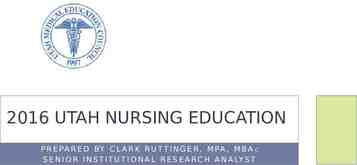Fraud prevention and detection Coordinators’ Day on Amendments
18 Slides639.08 KB
Fraud prevention and detection Coordinators’ Day on Amendments and Reporting 27 November 2020 Manuela Serrano Sereno Policy Officer – Anti-Fraud 1 DG RTD.B2 - Common Audit Service
Table of contents Fraud: what and why Why the fight against fraud Commission Anti-Fraud Strategy Most common types of fraud and serious irregularities detected in R&I grants Who is responsible for fraud prevention, detection and correction, and the role of project coordinators and consortia Red flags, controls and corrective measures 2
Fraud: what and why? Fraud is a deliberate act of deception intended for personal gain or to cause a loss to another party. Elements of fraud Intention The reasons behind fraud : Damage of EU’s financial interests FRAUD IRREGULARITY Illegal action Pressure is the financial or emotional cause prompting a fraudulent act; Opportunity is the perceived or actual possibility to commit fraud; Legal definitions: Rationalisation is the personal justification of fraudsters. 3 2988/95 - Irregularity: Article 1(2)Council Regulation - Fraud: Article 3 PIF Directive
Why fight against fraud? Fraud is a risk with a low occurrence rate in R&I (when detected) but a high reputational impact EU citizens deserve that the EU budget is spent in a sound and efficient way and for the intended purposes and societal challenges Everyone is concerned if fraud occurs – even consortia The EC has a zero tolerance to fraud R&I: trust-based Programme, but this does not mean we do not control. 4
Commission Anti-Fraud Strategy and sectorial strategies The 2019 CAFS: two priority objectives: data collection / analysis and coordination / cooperation. Ethics, enhanced transparency and fraud prevention remain as guiding principles. The AF Strategy for the R&I family (2019 RAFS) based on the principle of ‘better control rather than more control’. This strategy deals with external fraud risks related to the implementation of R&I Programmes concerning grant expenditure by the entire R&I family. Sectorial anti-fraud strategies These strategies address specific sectorial irregularities/fraud risks and patterns. They include external and internal fraud and cover grants, procurement, financial instruments, etc. 5
Who? Prevention and detection: Each EC/EA/JU staff member in his/her field of responsibility Anti-fraud experts in services (also working closely with OLAF) OLAF Project coordinators and beneficiaries !! Correction: For R&I, each RAO of the EC/EA/JU Investigation: OLAF, the European Anti-Fraud Office, is mandated to -and responsible for- investigating fraud against the EU budget (Regulations No 883/2013 and No 2185/96). (EPPO) 6
The most common types of fraud and serious irregularities in R&I grants Misuse of EU funds in general; Inflation of (personnel) costs or fictitious costs (of staff not working on action); Falsification of invoices or documents; Misrepresentation, identity theft; Double funding; Plagiarism; Undisclosed conflict of interest; Fraudulent bankruptcy. 7
Ex ante Controls Part of the internal control framework - Articles 36 & 74(5) FR & H2020 Ex ante Control Strategy: standard or automated controls (embedded in IT tools) on payment requests and on (technical and financial) reports and deliverables. Minimum level of ex ante controls & mandatory. Trust-based: focus on comparing the estimated budget/DoA with the work actually carried out and the costs claimed. targeted or risk-based controls. Risk management module and reinforced monitoring measures; particular attention is paid to double funding and plagiarism checks. 8
Checking legal entities is a responsibility of the EC but also of coordinators -Legal existence (legal registration) -Legal data (address, registration number, VAT, etc.) -Legal status (SME, Public, HE, etc.) PIC -Business scope ? -Coherence of contact details (email, internet domain, phone/fax) with respect to: Legal entity name Country -Why gmail or other generic emails? -Why non-existing web address ? -Who is the scientist involved ? -Why mobile / fixed phone number Country? -Third parties involved ? (These quick checks can be performed on any beneficiary at proposal stage and/or added via a request for amendment) 9
Ex post Controls Part of the internal control framework - Articles 36 & 74(6) FR Audits. They are carried out at any moment and up to 2 years after the payment of the balance. Audits normally concern mainly the financial implementation of the action by a beneficiary. (H2020 Ex post Audit Strategy) Reviews. They are carried out at any moment and up to 2 years after the payment of the balance. Reviews normally concern mainly the technical implementation of the action (i.e. its scientific and technological implementation). When suspicion of fraud, corruption or serious irregularity OLAF 10
What can project coordinators and consortia do? Carefully assess participants & their capacity when building consortia or modifying these; Attention to bank accounts and contact details of participants: address (PO Box, private addresses, non-professional emails, etc.), website (non existing/ under construction/amateur), conflicting phone numbers vs. countries Attention to other red flags (e.g. fabricated CVs, delays in response, poor or non participation in meetings, poor quality deliverables, defaulting beneficiary, bankruptcy right after having received the pre-financing, Amendments: an early request for change, a new partner, substantial changes of action tasks, changes concerning subcontractors, unclear distribution of subcontractor roles, links between the subcontractors and the beneficiary, unplanned subcontracting, etc.) Keep all evidence Report early your suspicions and observations: to your PO, to CAS auditors, to OLAF OLAF Fraud Notification System (FNS – Anonymous – 24 EU languages): https:// ec.europa.eu/anti-fraud/olaf-and-you/report-fraud en
Corrective measures in the event of a confirmed case of fraud (1) Exclusion from participating in award procedures or from being selected for implementing Union funds, for 5 years or the duration set by the final judgment (Articles 136 and 139 FR); Financial penalties (Article 138 FR and Article 45 MGA): the amount shall not exceed 10 % of the total value of the legal commitment; With the possibility of publishing the established facts/findings (the exclusion situation) and the financial penalties on the Commission's website (Article 140 FR); (Possible criminal prosecution under national law, in case of findings arising from an OLAF investigation and in the future from the EPPO.) 12
Corrective measures in the event of a confirmed case of fraud (2) Rejection from an award procedure (Article 141 FR); Reduction of the grant (Articles 131 FR & 43 MGA); Recovery of undue amounts (Articles 101-103 FR & 44 MGA); Suspension of payments (Articles 131 FR & 48 MGA); Suspension of the implementation of the grant agreement (Article 131 FR); Termination of the grant agreement or of the participation of one or more beneficiaries (Articles 131 FR & 50 MGA). 13
The Early Detection and Exclusion System (EDES) This system allows: (3 decisions made by RAO) the early detection of persons or entities which pose a risk to the financial interests of the Union. Registration of restricted information for 1 year (detection and circulation of this information); the exclusion of persons or entities which are in one of the exclusion situations referred to in Article 136(1) FR, such as fraud, corruption or other illegal activities. In case of fraud, this decision is based on a final judgment or a recommendation issued by the panel referred to in Article 143 FR; the imposition of financial penalties (final judgment or panel recommendation). 14
Example 1. Fake company and misrepresentation False declarations and falsified documents confirming scientific experience and achievements; Establishment of a fake research/scientific center using a fancy name without real staff or any kind of activity; unconfirmed working experience, non-verifiable author rights; inexistent publications; reference to publications in the specialised press cannot be found online; research center not found on public registers; inexistent employees, no turnover, etc. 15
Example 2. Undisclosed conflict of interest and falsification of timesheets A project leader added an extra researcher with only marginal input to the project and charged corresponding costs. The additional researcher: was his spouse; did not have the qualifications described; was not part of the team notified to the EC; received a salary three times higher than any other researcher; concordant family names; change of staff; asymmetric payment. 16
Conclusion: BE AWARE, BE ALERT ! Zero tolerance to fraud to protect the EU R&I budget Pay attention to red flags Rapidly report any suspicion or red flag to the EC/EA/JU, and/or auditors and/or OLAF 17
THANK YOU FOR YOUR KIND ATTENTION ANY QUESTIONS ? 18























